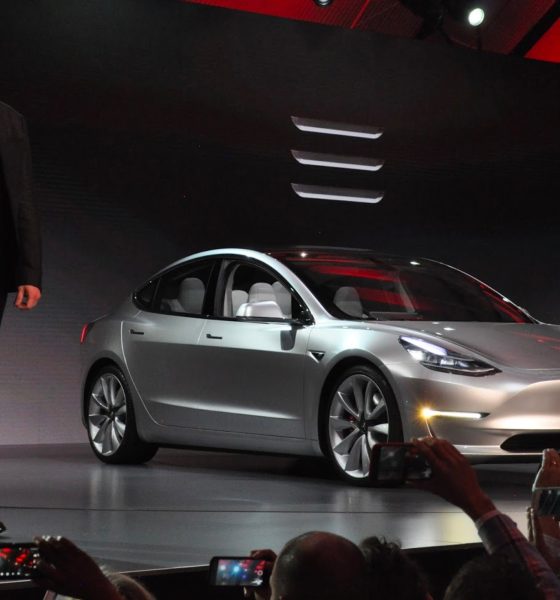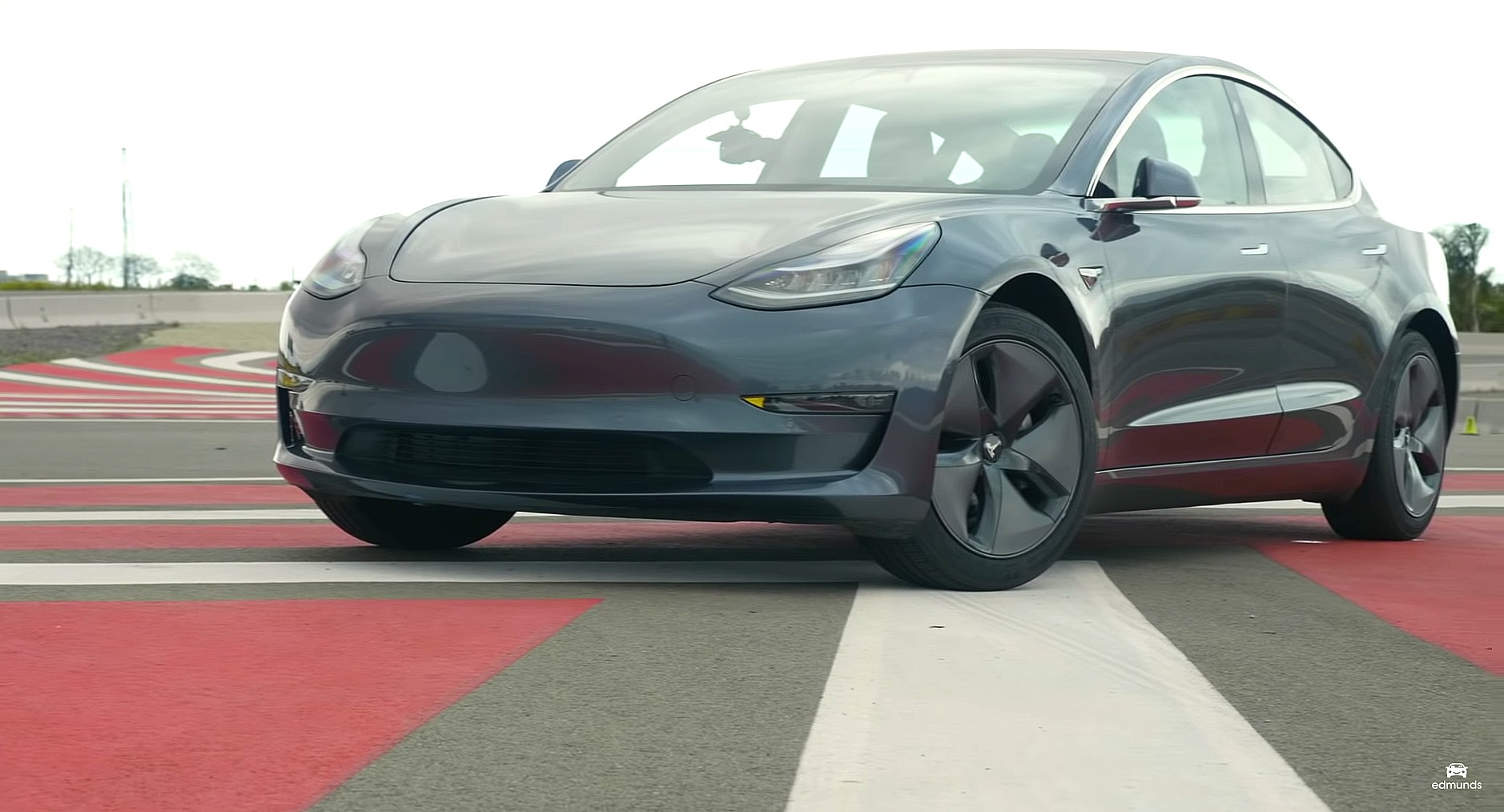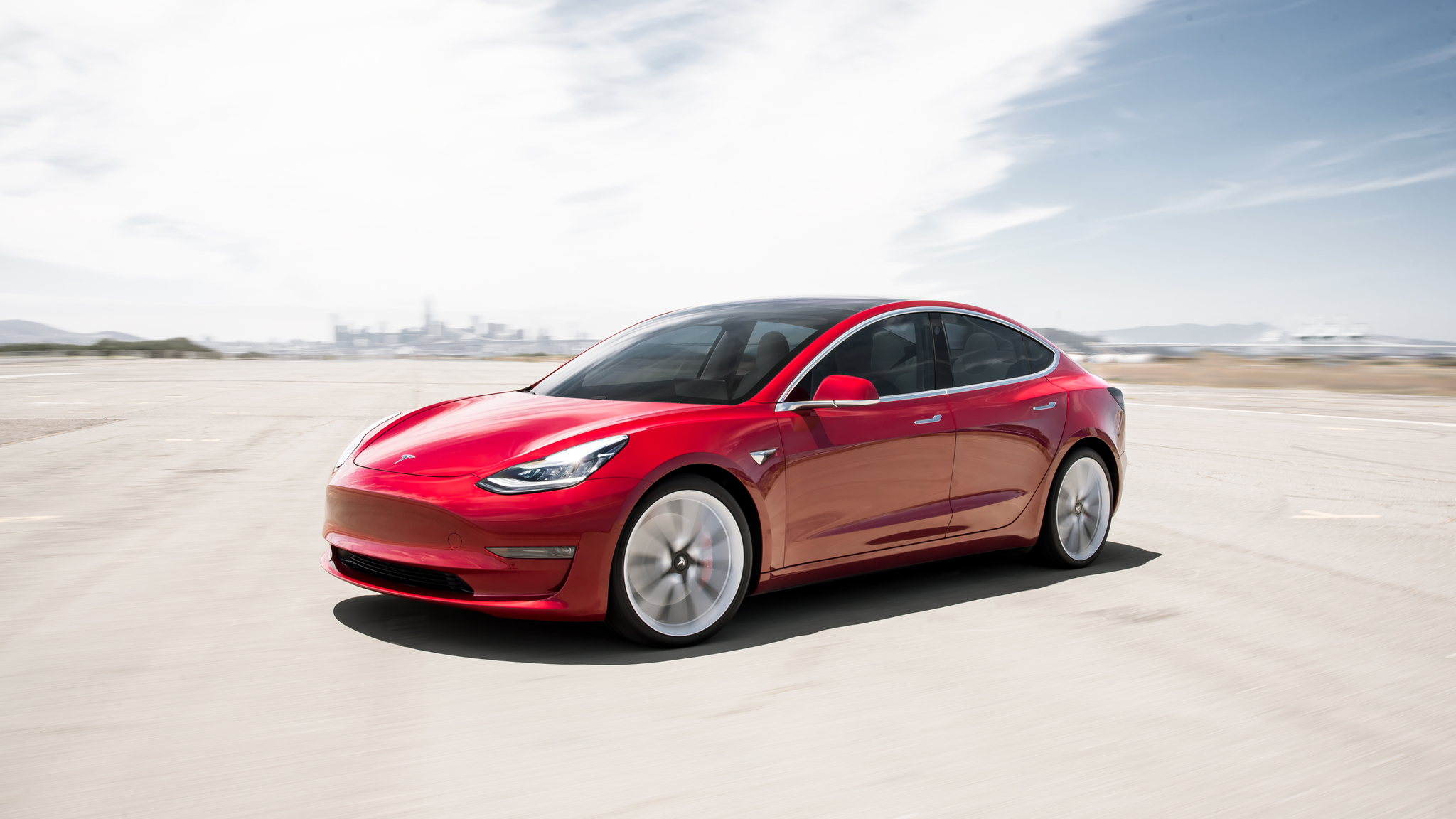

News
Tesla Model 3 three-year anniversary: How one sedan changed cars forever
The Tesla Model 3 was delivered for the first time three years ago today on July 28, 2017. The company’s first mass-market sedan was a product of years of hard work by Tesla engineers who worked to make electric vehicles fun and affordable for most families.
In the three short years that the Model 3 has been arriving in consumer garages, the car has changed the automotive industry as a whole, eliminating the belief that electric vehicles would always be inferior compared to their gas-powered counterparts.
The Model 3 was unveiled by Tesla on March 31, 2016. It was pegged as the car that would make Tesla a “mass-market” automaker and would be affordable and provide a sufficient range rating for owners everywhere.
The car was mentioned in Elon Musk’s 2006 document entitled “The Secret Tesla Motors Master Plan (just between you and me).” Musk stated it was the third step of the company’s big picture blueprint to bring the world away from poisonous vehicle emissions that were destroying the Earth.
But since the first 30 Model 3 production units were given to owners on July 28, 2017, the mass-market sedan has changed the world’s automotive market in many ways.
The Model 3 proved that electric cars could be affordable for everyone
Tesla’s first two vehicles in the Model S and Model X were fantastic luxury automobiles that are still recognized as the company’s flagship vehicles. While they introduced a new era of transportation by utilizing clean electricity as a power source, the two cars were expensive and out of many people’s typical price points. Both vehicles have decreased in price over the years, but the Model 3’s introduction proved that electric cars could provide sufficient range and performance without breaking the bank.

The Model 3 made Tesla a household name and showed the company was here to stay
The Model 3 has consistently been the company’s top-selling vehicle throughout its three-year tenure in Tesla’s EV fleet. Its most successful quarter came in Q4 2019 when Tesla successfully delivered 92,620 units of the mass-market sedan. But more significant than the vehicle itself, it proved that Tesla could be a competitive automaker and stand toe-to-toe with some of the legacy car companies that the U.S. has relied on for the past 100 years.

The Model 3 showed it could hang with the highest performance cars in the world
The Model 3 Performance, the vehicle’s most superior variant, has outclassed many of the fastest cars in the world. From the Porsche 911 GT3 and the Lamborghini Huracan to the BMW M3, the Model 3 has shown it is one of the best cars to have in the quarter-mile drag.
Elon Musk once said on 60 Minutes that Tesla’s objective was to prove that electric cars did not have to be slow or boring like a golf cart. The Model S and Model X certainly proved that, but the Model 3 did too, all while being affordable for many people.

In three years, the Model 3 has become the most popular EV in many countries. It has developed Tesla into an automotive powerhouse that is now recognized as the most valuable car company in the world. Not only is the car affordable, but it has impressive performance and changed the way of how many car buyers look at electric transportation.
Happy three year anniversary to the Tesla Model 3!

Elon Musk
SpaceX issues statement on Starship V3 Booster 18 anomaly
The incident unfolded during gas-system pressure testing at the company’s Massey facility in Starbase, Texas.

SpaceX has issued an initial statement about Starship Booster 18’s anomaly early Friday. The incident unfolded during gas-system pressure testing at the company’s Massey facility in Starbase, Texas.
SpaceX’s initial comment
As per SpaceX in a post on its official account on social media platform X, Booster 18 was undergoing gas system pressure tests when the anomaly happened. Despite the nature of the incident, the company emphasized that no propellant was loaded, no engines were installed, and personnel were kept at a safe distance from the booster, resulting in zero injuries.
“Booster 18 suffered an anomaly during gas system pressure testing that we were conducting in advance of structural proof testing. No propellant was on the vehicle, and engines were not yet installed. The teams need time to investigate before we are confident of the cause. No one was injured as we maintain a safe distance for personnel during this type of testing. The site remains clear and we are working plans to safely reenter the site,” SpaceX wrote in its post on X.
Incident and aftermath
Livestream footage from LabPadre showed Booster 18’s lower half crumpling around the liquid oxygen tank area at approximately 4:04 a.m. CT. Subsequent images posted by on-site observers revealed extensive deformation across the booster’s lower structure. Needless to say, spaceflight observers have noted that Booster 18 would likely be a complete loss due to its anomaly.
Booster 18 had rolled out only a day earlier and was one of the first vehicles in the Starship V3 program. The V3 series incorporates structural reinforcements and reliability upgrades intended to prepare Starship for rapid-reuse testing and eventual tower-catch operations. Elon Musk has been optimistic about Starship V3, previously noting on X that the spacecraft might be able to complete initial missions to Mars.
Investor's Corner
Tesla analyst maintains $500 PT, says FSD drives better than humans now
The team also met with Tesla leaders for more than an hour to discuss autonomy, chip development, and upcoming deployment plans.

Tesla (NASDAQ:TSLA) received fresh support from Piper Sandler this week after analysts toured the Fremont Factory and tested the company’s latest Full Self-Driving software. The firm reaffirmed its $500 price target, stating that FSD V14 delivered a notably smooth robotaxi demonstration and may already perform at levels comparable to, if not better than, average human drivers.
The team also met with Tesla leaders for more than an hour to discuss autonomy, chip development, and upcoming deployment plans.
Analysts highlight autonomy progress
During more than 75 minutes of focused discussions, analysts reportedly focused on FSD v14’s updates. Piper Sandler’s team pointed to meaningful strides in perception, object handling, and overall ride smoothness during the robotaxi demo.
The visit also included discussions on updates to Tesla’s in-house chip initiatives, its Optimus program, and the growth of the company’s battery storage business. Analysts noted that Tesla continues refining cost structures and capital expenditure expectations, which are key elements in future margin recovery, as noted in a Yahoo Finance report.
Analyst Alexander Potter noted that “we think FSD is a truly impressive product that is (probably) already better at driving than the average American.” This conclusion was strengthened by what he described as a “flawless robotaxi ride to the hotel.”
Street targets diverge on TSLA
While Piper Sandler stands by its $500 target, it is not the highest estimate on the Street. Wedbush, for one, has a $600 per share price target for TSLA stock.
Other institutions have also weighed in on TSLA stock as of late. HSBC reiterated a Reduce rating with a $131 target, citing a gap between earnings fundamentals and the company’s market value. By contrast, TD Cowen maintained a Buy rating and a $509 target, pointing to strong autonomous driving demonstrations in Austin and the pace of software-driven improvements.
Stifel analysts also lifted their price target for Tesla to $508 per share over the company’s ongoing robotaxi and FSD programs.
Elon Musk
SpaceX Starship Version 3 booster crumples in early testing
Photos of the incident’s aftermath suggest that Booster 18 will likely be retired.

SpaceX’s new Starship first-stage booster, Booster 18, suffered major damage early Friday during its first round of testing in Starbase, Texas, just one day after rolling out of the factory.
Based on videos of the incident, the lower section of the rocket booster appeared to crumple during a pressurization test. Photos of the incident’s aftermath suggest that Booster 18 will likely be retired.
Booster test failure
SpaceX began structural and propellant-system verification tests on Booster 18 Thursday night at the Massey’s Test Site, only a few miles from Starbase’s production facilities, as noted in an Ars Technica report. At 4:04 a.m. CT on Friday, a livestream from LabPadre Space captured the booster’s lower half experiencing a sudden destructive event around its liquid oxygen tank section. Post-incident images, shared on X by @StarshipGazer, showed notable deformation in the booster’s lower structure.
Neither SpaceX nor Elon Musk had commented as of Friday morning, but the vehicle’s condition suggests it is likely a complete loss. This is quite unfortunate, as Booster 18 is already part of the Starship V3 program, which includes design fixes and upgrades intended to improve reliability. While SpaceX maintains a rather rapid Starship production line in Starbase, Booster 18 was generally expected to validate the improvements implemented in the V3 program.
Tight deadlines
SpaceX needs Starship boosters and upper stages to begin demonstrating rapid reuse, tower catches, and early operational Starlink missions over the next two years. More critically, NASA’s Artemis program depends on an on-orbit refueling test in the second half of 2026, a requirement for the vehicle’s expected crewed lunar landing around 2028.
While SpaceX is known for diagnosing failures quickly and returning to testing at unmatched speed, losing the newest-generation booster at the very start of its campaign highlights the immense challenge involved in scaling Starship into a reliable, high-cadence launch system. SpaceX, however, is known for getting things done quickly, so it would not be a surprise if the company manages to figure out what happened to Booster 18 in the near future.








